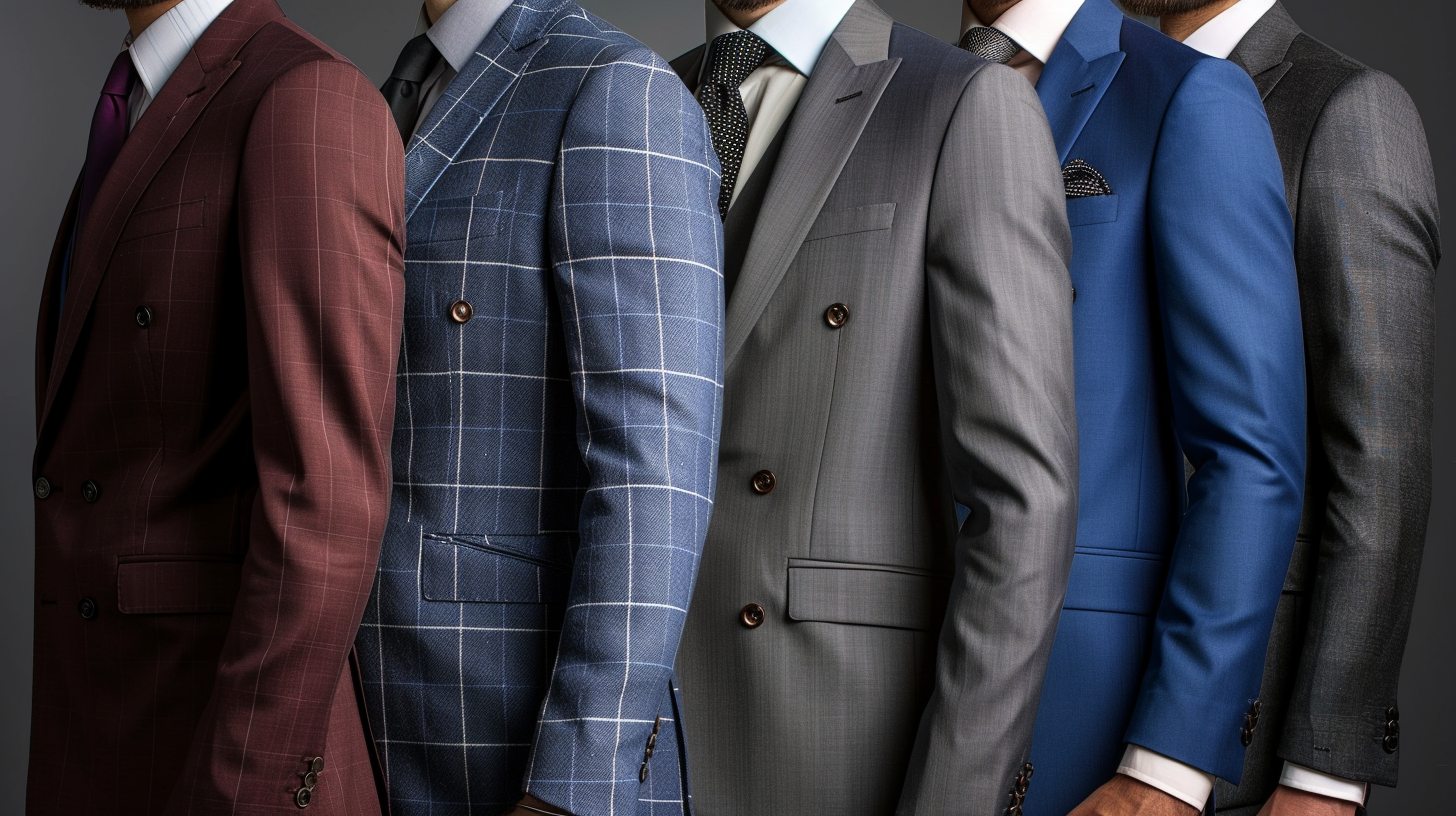Wearing a suit jacket that doesn’t fit right can instantly throw off your entire look—even if everything else is on point. Most men wear jackets that are too loose, too long, or just plain unflattering.
Whether you’re dressing for the boardroom, a wedding, or an upscale dinner, your jacket should complement your body, not hide it. The right style and fit make you look taller, sharper, and more confident without trying too hard.
Imagine slipping on a suit jacket that hugs your shoulders just right, skims your waist perfectly, and ends exactly where it should. You feel confident, polished, and ready for anything—because your outfit is working for you, not against you.
In this guide, you’ll learn exactly how to choose a jacket that fits your build, what the different styles mean, and the key rules for length, sleeve, and collar placement. Let’s make sure your next suit jacket doesn’t just fit—but fits you.
Here’s What You’ll Learn:
- How to pick the right suit jacket style—single-breasted, double-breasted, or tuxedo—to match the occasion.
- The key fit rules for shoulders, chest, waist, sleeves, jacket length, and collar so you look sharp from every angle.
- The differences between slim, regular, and modern fits, and which works best for your body type.
- How to style a suit jacket with jeans for a smart-casual look without breaking style rules.
- Common jacket fit mistakes and how to avoid them for a polished, confident appearance.
What Is a Suit Jacket?
A suit jacket is the upper part of a suit, worn over a dress shirt and usually paired with matching trousers. It’s structured, with padded shoulders and a tailored fit that shapes the body. Suit jackets come in different styles like single-breasted or double-breasted, and they often feature lapels, buttons, vents, and pockets. They are designed to look clean, sharp, and professional, making them a key piece in formal and business wear.
Types of Suit Jackets
Single-Breasted Jacket
The single-breasted suit jacket is the most common and versatile style. It features one row of buttons (usually one, two, or three) down the front and a narrow overlap. This jacket works well in almost any setting—from office wear to weddings—because it pairs easily with different shirt and tie combos. Its clean, simple design flatters most body types.
Double-Breasted Jacket
A double-breasted jacket has two parallel rows of buttons and a wider front overlap. It looks more structured and formal than a single-breasted style. This jacket is often seen in business or upscale settings and is best worn buttoned. It works best on taller or broader men since it adds bulk and a bold appearance.
Tuxedo Jacket
The tuxedo jacket is designed for black-tie events and formal occasions. It usually features satin lapels, satin-covered buttons, and no vents. Worn with a bow tie and tuxedo trousers, this jacket offers a sleek and elegant look. It’s not meant for daily use but makes a strong impression at weddings, galas, or formal dinners.
How Your Suit Jacket Should Fit
Shoulders
The jacket’s shoulder seams should line up perfectly with the edge of your shoulders. This is the most important area for fit because it can’t be altered easily. If the seam droops past your shoulder, the jacket is too large. If it pulls tight or causes wrinkles at the top, it’s too small.
Chest
When buttoned, the jacket should lie flat across your chest without pulling or gaping. You should be able to slide a flat hand between your chest and the fabric comfortably. If there’s visible strain around the buttons or fabric creases across the front, it’s too tight.
Waist
A good suit jacket has a gentle taper at the waist, following the natural lines of your body. It should give you shape without feeling snug. If the buttons pull or cause the jacket to bunch, it’s too tight. If the torso looks boxy or shapeless, it’s too loose.
Sleeves
Jacket sleeves should end at your wrist bone and allow a bit of shirt cuff—about a quarter to half an inch—to show. This small detail gives your outfit a tailored look. Sleeves that are too long will cover your shirt completely, while too-short sleeves look awkward and unfinished.
Jacket Length
The bottom of your suit jacket should cover your seat when standing. A quick check is to let your arms hang: the hem should fall around the middle of your hand. Too short, and the jacket looks trendy or ill-fitted. Too long, and it overwhelms your proportions.
Collar
The jacket collar should rest flat against your shirt collar with no visible gaps or bunching. A gap means the collar stands away from your neck, while bunching at the back shows poor alignment. A clean, smooth collar line keeps the whole look sharp and polished.
The Different Types of Suit Fits
Slim Fit
A slim fit suit is narrow through the chest, waist, and sleeves. It hugs the body closely, creating a sharp, tailored look. This style works best for lean or athletic body types and is a popular choice for modern, fashion-forward men.
Regular Fit
The regular fit suit offers more room through the chest, shoulders, and waist. It’s a classic cut that provides comfort without looking oversized. Ideal for men with average builds, this fit is traditional and widely accepted in formal settings.
Modern Fit
Modern fit suits fall between slim and regular cuts. They’re slightly tapered in the waist and legs for a cleaner silhouette but still offer enough room for comfort. This fit suits most body types and is great for those who want a balanced, updated style.
FAQs About Suit Fit
What does 50R mean in suit sizes?
“50R” means size 50 Regular. The number is your chest size in centimeters. “R” stands for Regular length. You may also see “S” (Short) or “L” (Long).
What suit jacket size am I?
Measure around your chest, just under the armpits. This gives your jacket size. Visit suit jacket stores to try on options before buying.
Can a suit jacket be made smaller?
Yes. A tailor can slim the waist or sleeves. But changing the shoulders or length is harder.
Where should men’s suit jacket fall?
It should fall just below your seat and mid-palm in the front.
How long should a suit jacket be on a man?
A proper length gives balance. Too short looks trendy but may seem awkward. Too long looks sloppy.
Can a man wear a suit jacket with jeans?
Yes, but choose the right jacket:
- Stick to textured fabrics like tweed or cotton.
- Avoid shiny or formal suit jackets.
- Pair with dark, slim jeans for balance.
What are the rules for wearing a suit jacket?
- Leave the bottom button undone.
- Don’t overload pockets.
- Keep it clean and pressed.
Final Thought
Finding the right jacket suit man fit is key to pulling off a sharp, confident look. Whether you’re wearing it to the office, a wedding, or a formal event, the right suit jacket should flatter your frame, feel comfortable, and land at just the right length. From classic cuts to modern styles, knowing how your jacket should fit makes all the difference in dressing like a pro.














What do you think?
It is nice to know your opinion. Leave a comment.